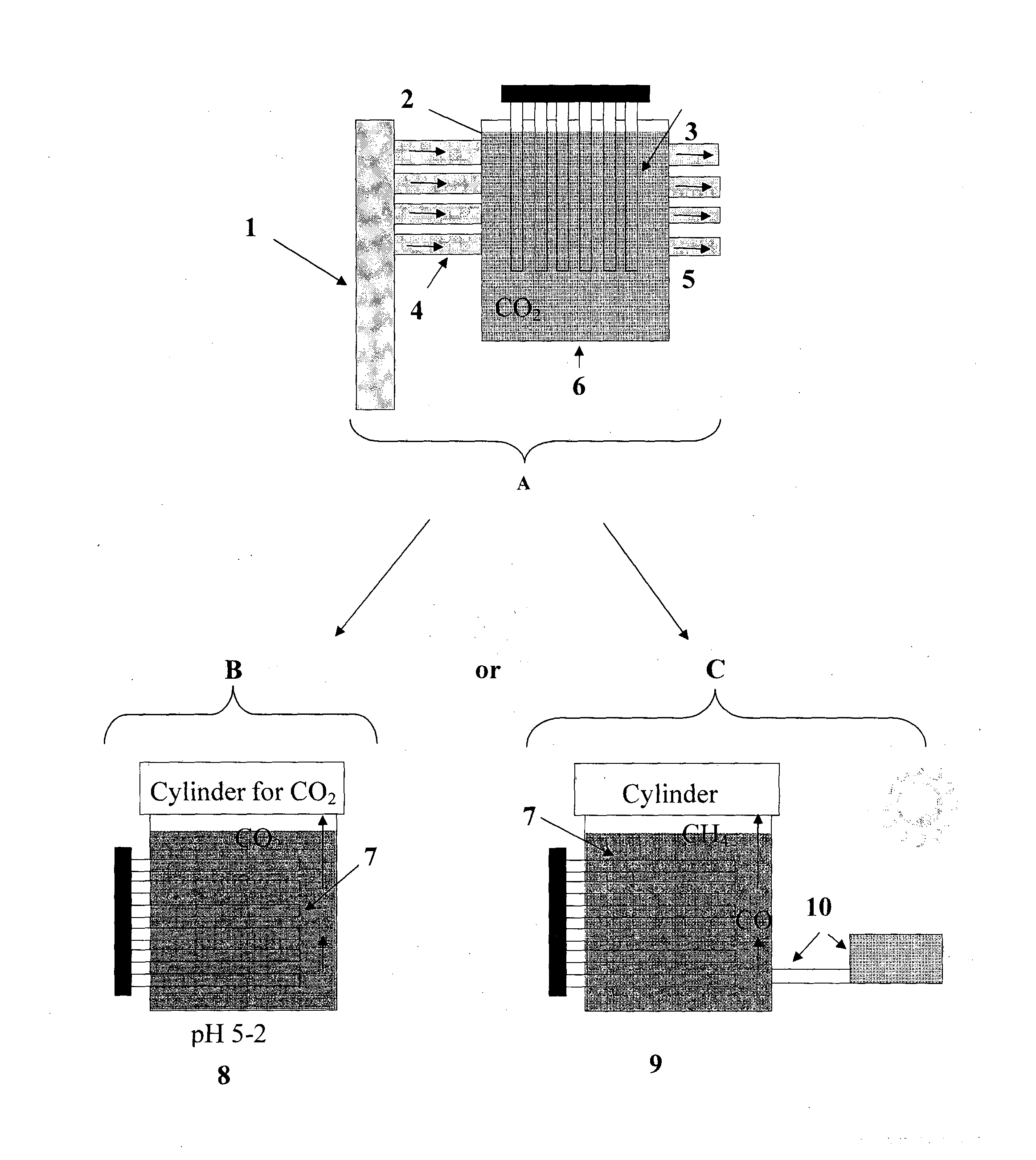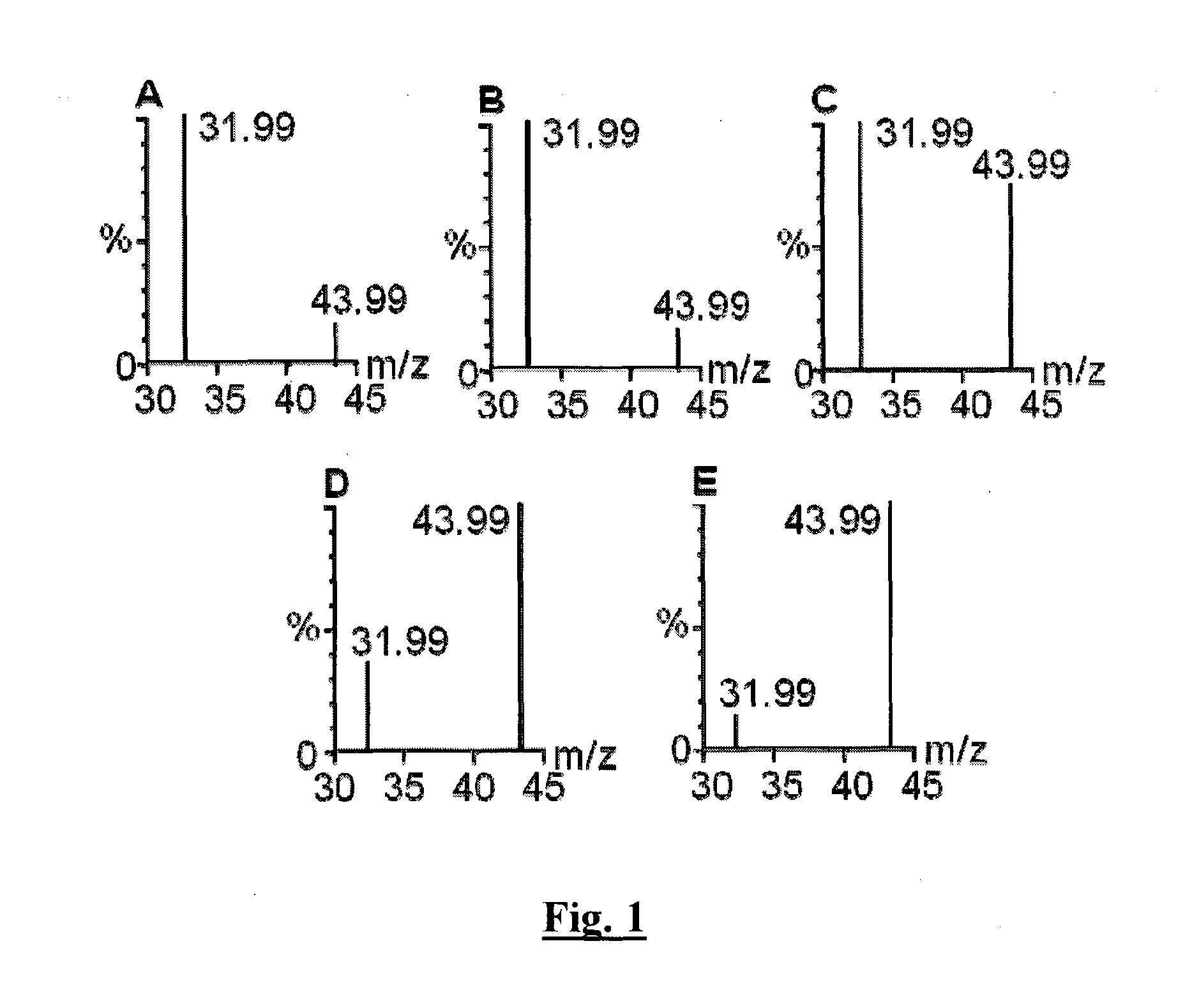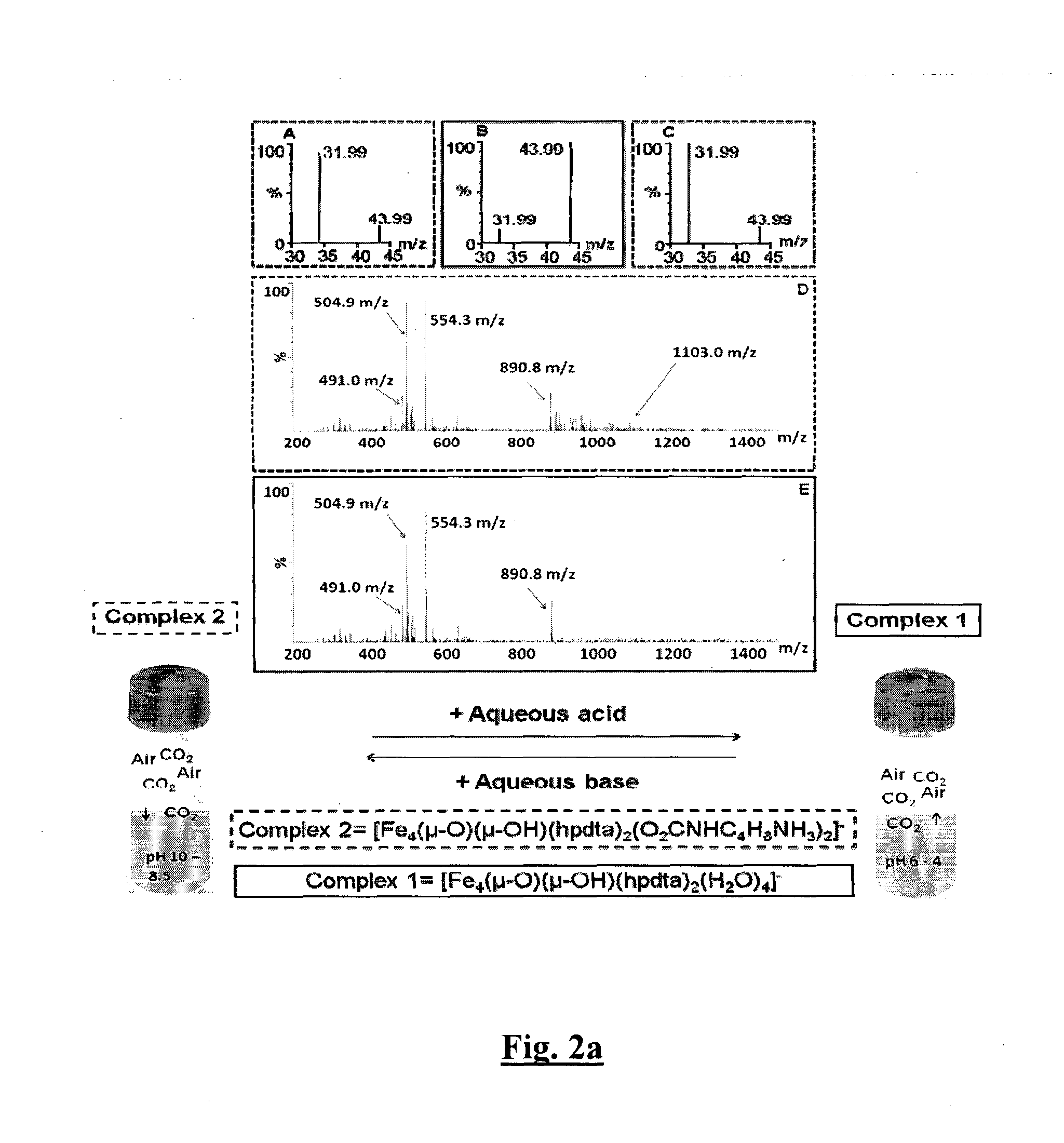Sequestration and release of carbon dioxide
a carbon dioxide and carbon dioxide technology, applied in the field of carbon dioxide capture and release, can solve the problems of limited availability of green technologies for capture and sequestration, high cost of current technologies, and emitted 610sup>9 /sup>tons of carbon per year, and achieve the effect of facilitating the immobilisation or stabilisation of the complex
- Summary
- Abstract
- Description
- Claims
- Application Information
AI Technical Summary
Benefits of technology
Problems solved by technology
Method used
Image
Examples
example 1
w[FIII4(μ-O)(μ-OH)(hpdta)2(CO3)2].sol (1)
[0395]0.081 g (0.25 mmol) H5hpdta was dissolved in 5 ml of deionised water by addition of 0.5 ml sodium hydroxide solution (2M). 0.202 g (0.5 mmol) Fe(NO3)3.9H2O was added to the reaction mixture followed by 0.25 ml sodium hydroxide solution (0.1M) to adjust the pH to 8.5. Co-evaporation with 2.5 ml dimethylacetamide led to the formation of green crystals of 1 after 4 days. The compound was dried for 24 hours at 120° C. Yield=75% Chemical analysis. for {Na(H2O)4}5[FeIII4(μ-O)(μ-OH)(hpdta)2(CO3)2].12H2O Calculated: C %, 22.12; H %, 3.2; N %, 4.29; Fe %, 17.32; Na %, 7.37. Found: C %, 21.49; H %, 2.66; N %, 3.94; Fe %, 16.41; Na %, 7.3. FTIR (cm−1) νmax: 3372.39 (s, br), 2958 (s), 2925 (s), 1606.81 (vs), 1477.02 (br, m), 1325.17 (s), 1165.21 (m), 1055.10 (m), 1003.57 (m), 915.96 (s), 853.09 (w).
example 2
w[Fe4(μ-O)(μ-OH)(hpdta)2(O2CNHC3H6NH3)2].x sol (2)
[0396]0.081 g (0.25 mmol) H5hpdta was dissolved in 5 ml of deionised water by addition of 1,4-diaminopropane. 0.202 g (0.5 mmol) Fe(NO3)3.9H2O was added to the reaction mixture followed by 0.25 ml 1,4-diaminopropane to adjust the pH to 8.5. Co-evaporation with 2.5 ml dimethylacetamide led to the formation of a green powder of 2. The compound was dried for 24 hours at 120° C. Yield=35 mg. FTIR (cm−1) νmax: 3327 (s, br), 2934 (s), 2890 (s), 1622 (s), 1567 (s), 1510 (s), 1366 (s), 1240 (s), 1219 (s), 999 (s), 911(s), 863 (s), 652 (m).
example 3
w[Fe4(μ-O)(μ-OH)(hpdta)2(O2CNHNH3)2].x sol (3)
[0397]0.081 g (0.25 mmol) H5hpdta was dissolved in 5 ml of deionised water by addition of hydrazine. 0.202 g (0.5 mmol) Fe(NO3)3.9H2O was added to the reaction mixture followed by 0.25 ml hydrazine to adjust the pH to 8.5. Co-evaporation with 2.5 ml dimethylacetamide led to the formation of small green crystals of 3. The crystals formed after 3 days but were unsuitable for single x-ray characterisation. The compound was dried for 24 hours at 120° C. Yield=35 mg. (NH2NH3)[Fe4(μ-O)(μ-OH)(hpdta)2(O2CNHNH3)2].x sol; FTIR (cm−1) νmax: 3327 (s, br), 2934 (s), 2890 (s), 1622 (s), 1567 (s), 1510 (s), 1366 (s), 1240 (s), 1219 (s), 999 (s), 911(s), 863 (s). 652 (m).
PUM
| Property | Measurement | Unit |
|---|---|---|
| pH | aaaaa | aaaaa |
| pH | aaaaa | aaaaa |
| pH | aaaaa | aaaaa |
Abstract
Description
Claims
Application Information
 Login to View More
Login to View More - R&D
- Intellectual Property
- Life Sciences
- Materials
- Tech Scout
- Unparalleled Data Quality
- Higher Quality Content
- 60% Fewer Hallucinations
Browse by: Latest US Patents, China's latest patents, Technical Efficacy Thesaurus, Application Domain, Technology Topic, Popular Technical Reports.
© 2025 PatSnap. All rights reserved.Legal|Privacy policy|Modern Slavery Act Transparency Statement|Sitemap|About US| Contact US: help@patsnap.com



